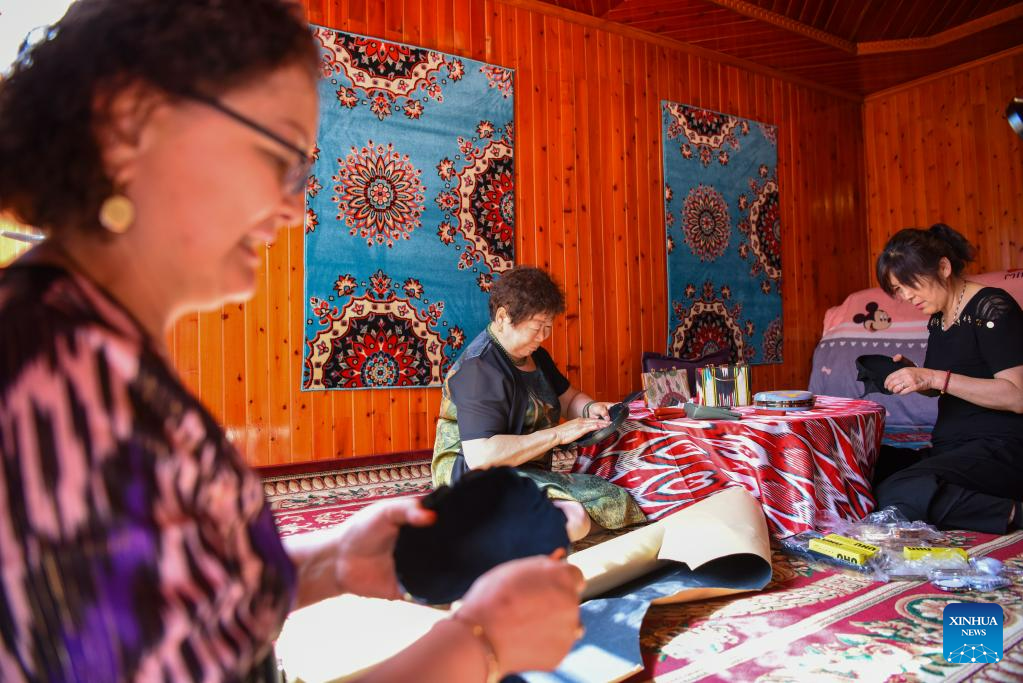
Residents make handmade doppa at home on Liuxing Street in Yining City, Ili Kazak Autonomous Prefecture, northwest China's Xinjiang Uygur Autonomous Region, May 19, 2023. Liuxing Street, built in 1930s, is a well-known historical block in Yining City. It is a community with many of its residents being ethnic minorities including Uygur, Kazakh, and Hui people.
The street has developed into a tourist attraction integrating tourism, cultural exhibitions, characteristic restaurants and craft processing. (Xinhua/Ding Lei)
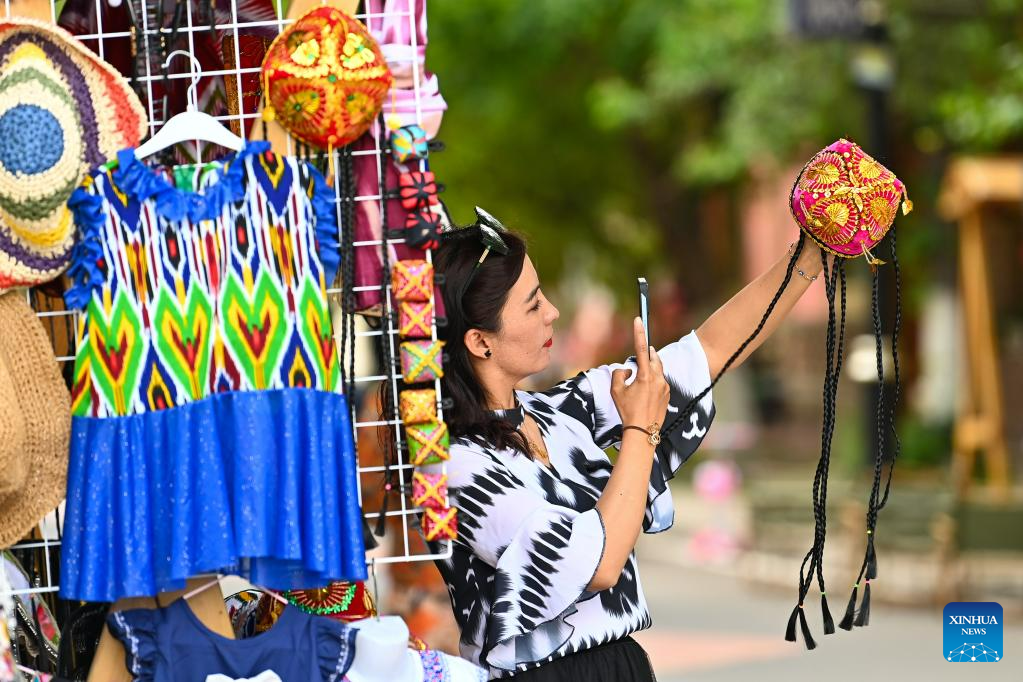
A tourist takes photos of a doppa on Liuxing Street in Yining City, Ili Kazak Autonomous Prefecture, northwest China's Xinjiang Uygur Autonomous Region, May 19, 2023. Liuxing Street, built in 1930s, is a well-known historical block in Yining City. It is a community with many of its residents being ethnic minorities including Uygur, Kazakh, and Hui people.
The street has developed into a tourist attraction integrating tourism, cultural exhibitions, characteristic restaurants and craft processing. (Xinhua/Ding Lei)

Local residents dance to greet tourists on Liuxing Street in Yining City, Ili Kazak Autonomous Prefecture, northwest China's Xinjiang Uygur Autonomous Region, May 19, 2023. Liuxing Street, built in 1930s, is a well-known historical block in Yining City. It is a community with many of its residents being ethnic minorities including Uygur, Kazakh, and Hui people.
The street has developed into a tourist attraction integrating tourism, cultural exhibitions, characteristic restaurants and craft processing. (Xinhua/Ding Lei)

A visitor shops for hamdmade bags on Liuxing Street in Yining City, Ili Kazak Autonomous Prefecture, northwest China's Xinjiang Uygur Autonomous Region, May 19, 2023. Liuxing Street, built in 1930s, is a well-known historical block in Yining City. It is a community with many of its residents being ethnic minorities including Uygur, Kazakh, and Hui people.
The street has developed into a tourist attraction integrating tourism, cultural exhibitions, characteristic restaurants and craft processing. (Xinhua/Ding Lei)
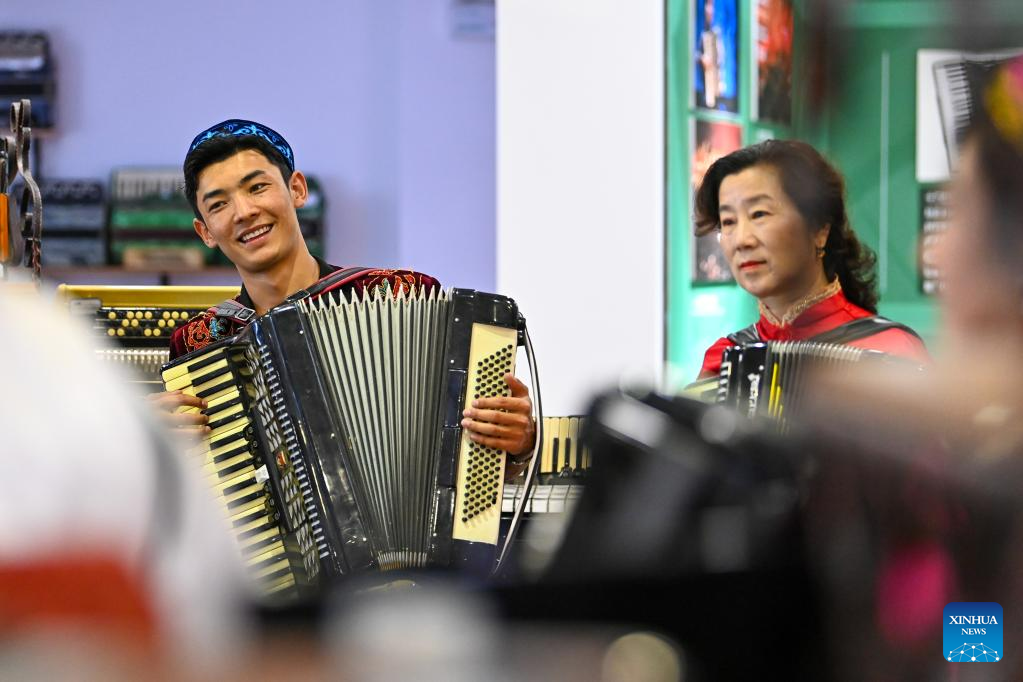
An accordion band plays for visitors on Liuxing Street in Yining City, Ili Kazak Autonomous Prefecture, northwest China's Xinjiang Uygur Autonomous Region, May 19, 2023. Liuxing Street, built in 1930s, is a well-known historical block in Yining City. It is a community with many of its residents being ethnic minorities including Uygur, Kazakh, and Hui people.
The street has developed into a tourist attraction integrating tourism, cultural exhibitions, characteristic restaurants and craft processing. (Xinhua/Ding Lei)

Tourists take photos on Liuxing Street in Yining City, Ili Kazak Autonomous Prefecture, northwest China's Xinjiang Uygur Autonomous Region, May 19, 2023. Liuxing Street, built in 1930s, is a well-known historical block in Yining City. It is a community with many of its residents being ethnic minorities including Uygur, Kazakh, and Hui people.
The street has developed into a tourist attraction integrating tourism, cultural exhibitions, characteristic restaurants and craft processing. (Xinhua/Ding Lei)
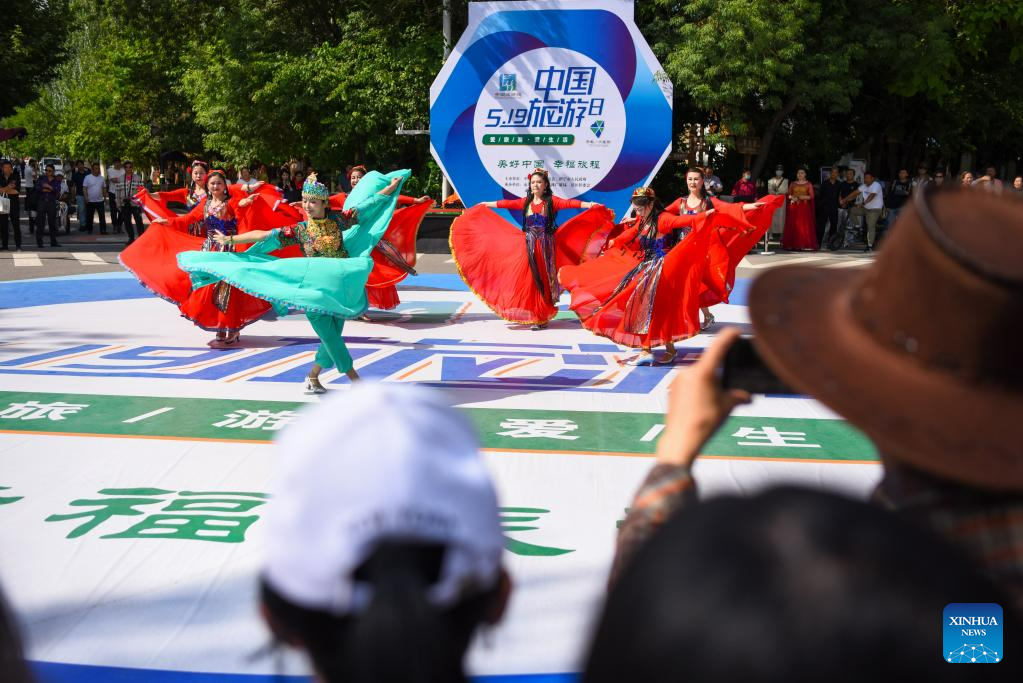
Visitors enjoy a dance performance on Liuxing Street in Yining City, Ili Kazak Autonomous Prefecture, northwest China's Xinjiang Uygur Autonomous Region, May 19, 2023. Liuxing Street, built in 1930s, is a well-known historical block in Yining City. It is a community with many of its residents being ethnic minorities including Uygur, Kazakh, and Hui people.
The street has developed into a tourist attraction integrating tourism, cultural exhibitions, characteristic restaurants and craft processing. (Xinhua/Ding Lei)
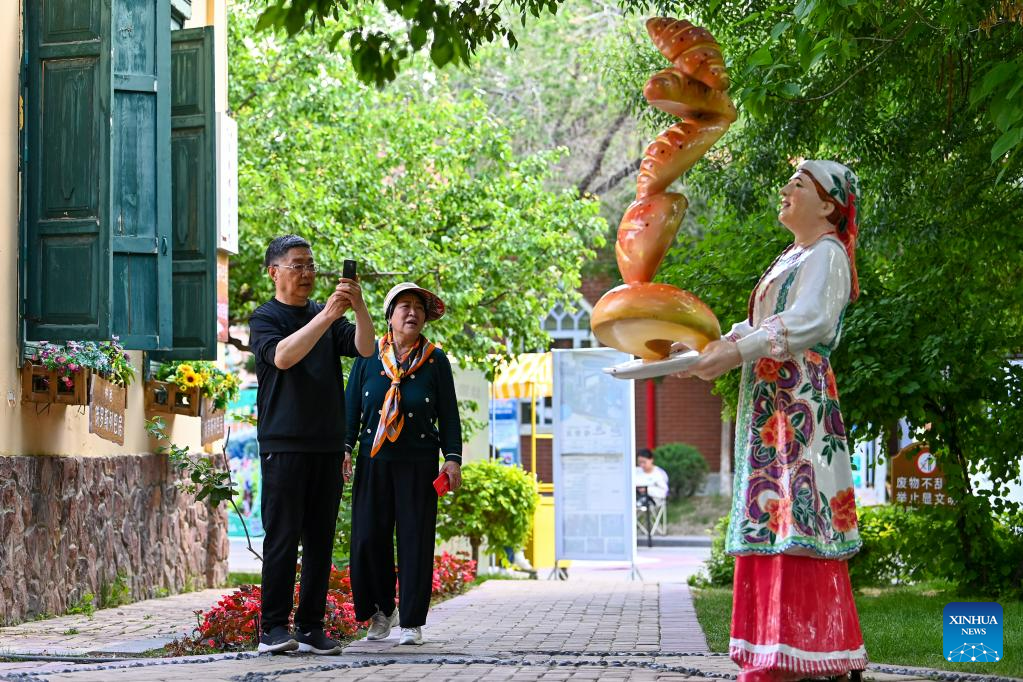
Tourists take photos on Liuxing Street in Yining City, Ili Kazak Autonomous Prefecture, northwest China's Xinjiang Uygur Autonomous Region, May 19, 2023. Liuxing Street, built in 1930s, is a well-known historical block in Yining City. It is a community with many of its residents being ethnic minorities including Uygur, Kazakh, and Hui people.
The street has developed into a tourist attraction integrating tourism, cultural exhibitions, characteristic restaurants and craft processing. (Xinhua/Ding Lei)



